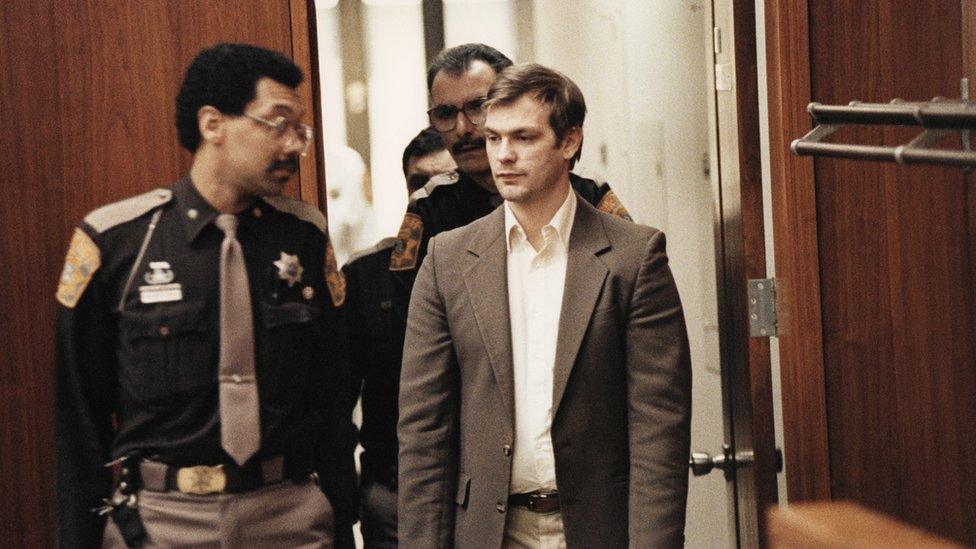FBI releases serial killer Samuel Little's drawings of victims
- Published
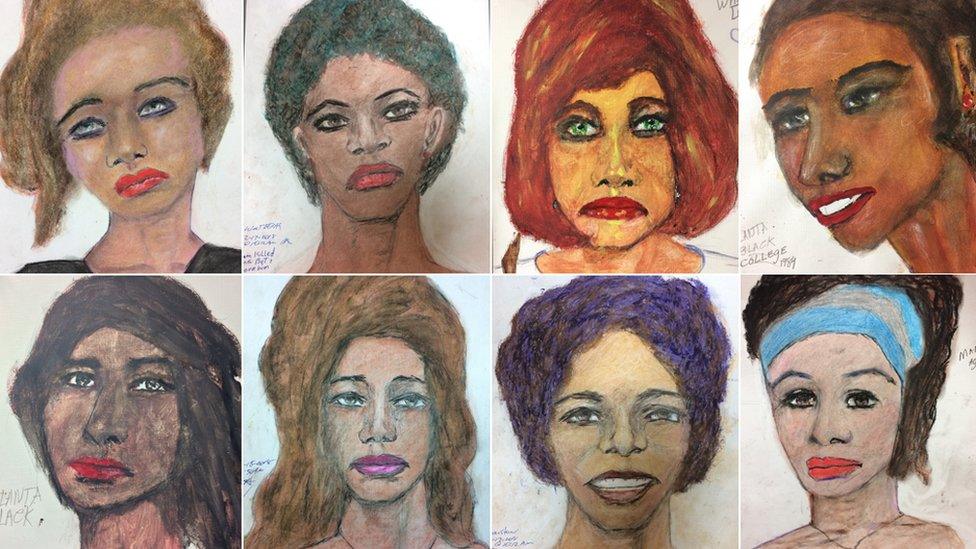
The FBI released Samuel Little's drawings in the hope that the victims could be identified.
The FBI has released the portraits a serial killer drew of his victims in the hope that they can be identified.
Samuel Little, 78, confessed to killing 90 people over three decades last year, while already serving three life sentences for murder.
The killings took place across the US between 1970 and 2005.
Investigators say he targeted "marginalised and vulnerable women", and that some of their bodies went unidentified and deaths uninvestigated.
Having heard all of his confessions, they believe he could be one of the most prolific serial killers in US history.

Los Angeles, California: 'White female between 23-25 years old killed in 1996'

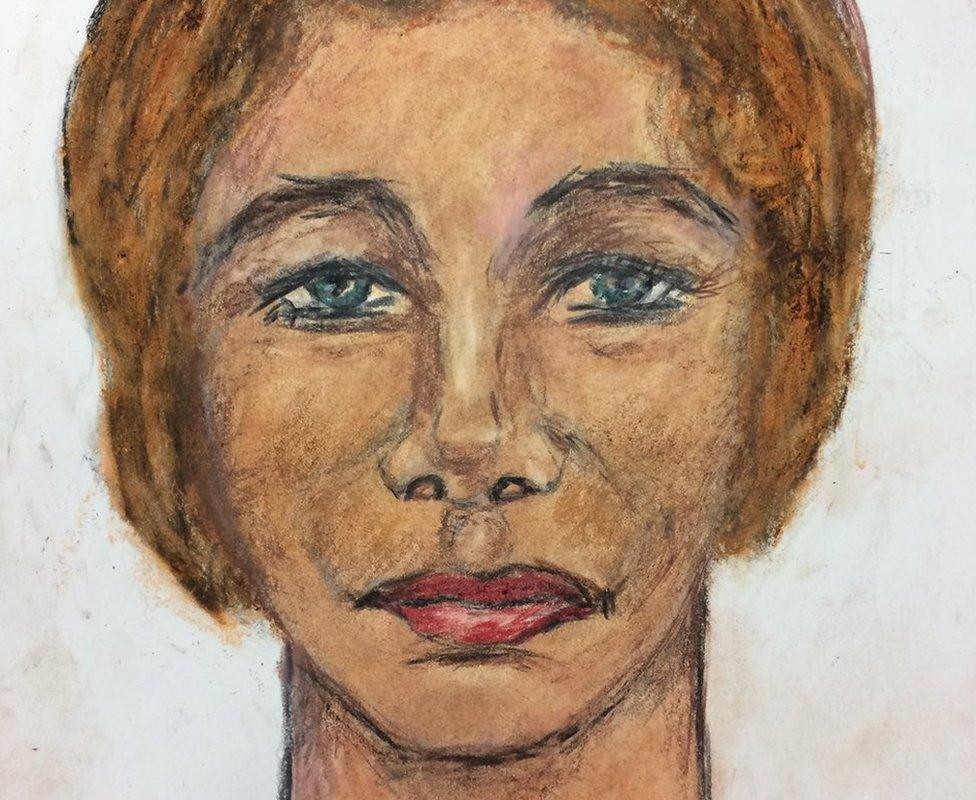
'White female killed in 1984. Met victim in Columbus, Ohio. Body disposed of somewhere in Northern Kentucky'

Little, a former competitive boxer, would knock his victims out with punches before strangling them - meaning that there were not always "obvious signs" that the person had been killed.
Now, they are hoping that Little's drawings can help them to finally find out who the victims were so that their families can be notified.
"With no stab marks or bullet wounds, many of these deaths were not classified as homicides but attributed to drug overdoses, accidents, or natural causes," the FBI said in its initial report in November last year.
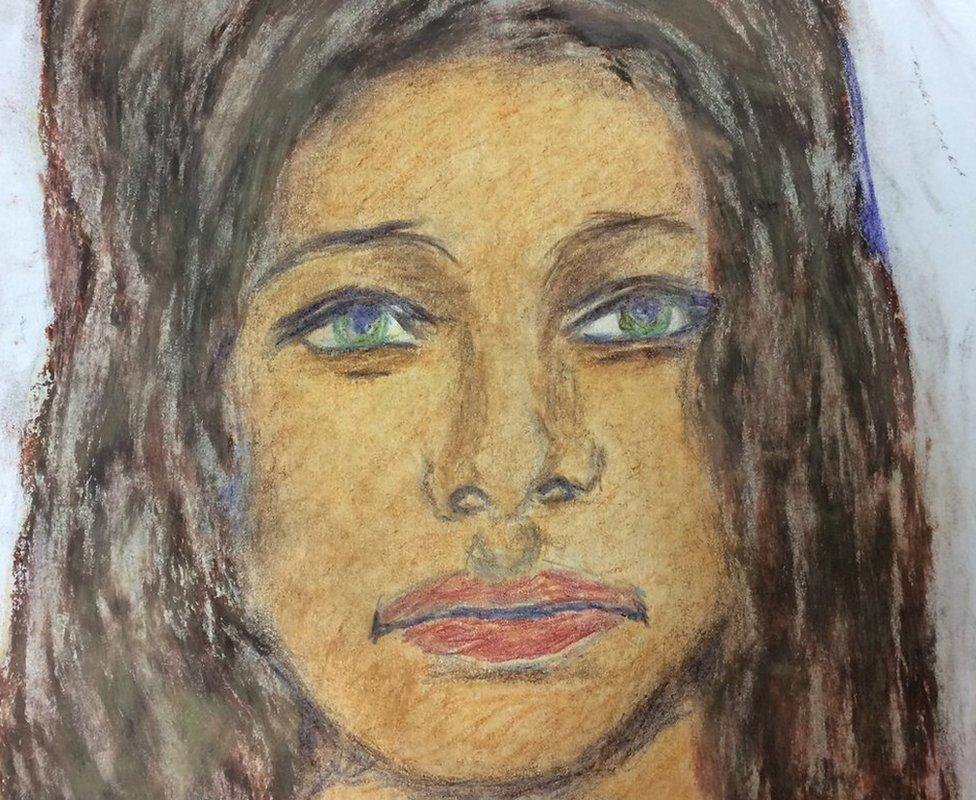
'White female between 20-25 years old killed in 1972. Victim possibly from Massachusetts'


'Black female, age 26, killed between 1976 and 1979. Met victim in St. Louis, Missouri. Victim possibly called Jo'

'One of the most prolific serial killers in US history'
Although Little has been convicted of three murders, the FBI believes that he is responsible for many more.
Little was first caught in 2012 when he was arrested on a drugs charge in a homeless shelter in Kentucky, and extradited to California.
Once he was in police custody in Los Angeles, officers carried out DNA testing on him.
The results linked him to three unsolved murders from 1987 and 1989, which were all in Los Angeles County.
He pleaded not guilty at trial, but was eventually convicted and sentenced to three consecutive life sentences, with no chance of parole.
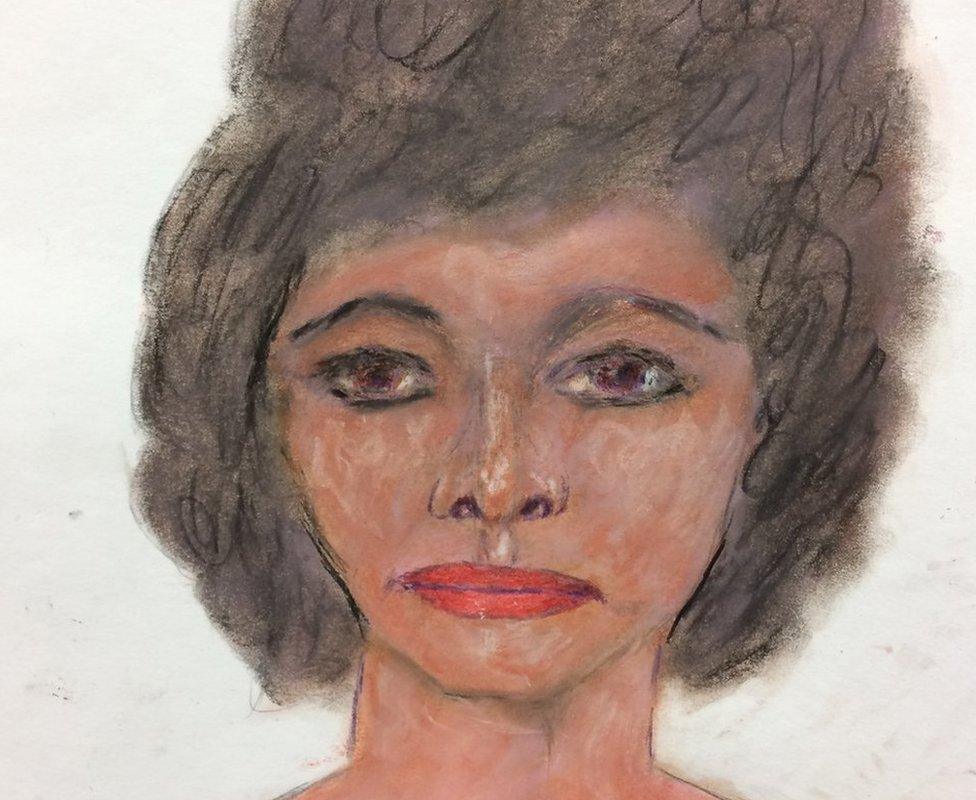
'Black female between 28-29 years old killed in 1984. Victim picked up in Memphis, Tennessee'


Houston, Texas: 'Black female between 25-28 years old killed between 1976 and 1979 or in 1993'

His three known victims were beaten and strangled, before their bodies were dumped in alleyways or bins.
Before being convicted of murder Little had already built up an extensive criminal record, with offences from armed robbery to rape in a number of different states across the US.
Little's case was passed on to the FBI's Violent Criminal Apprehension Programme (ViCAP), which analyses people who serially commit violent and and sexual crimes. They then share their findings with local law enforcement in different areas, in order to check them against any unsolved crimes.
ViCAP, tasked with doing a full background check on Little, noticed that the three LA killings were very similar to a number of unsolved deaths dating back to the 1970s.
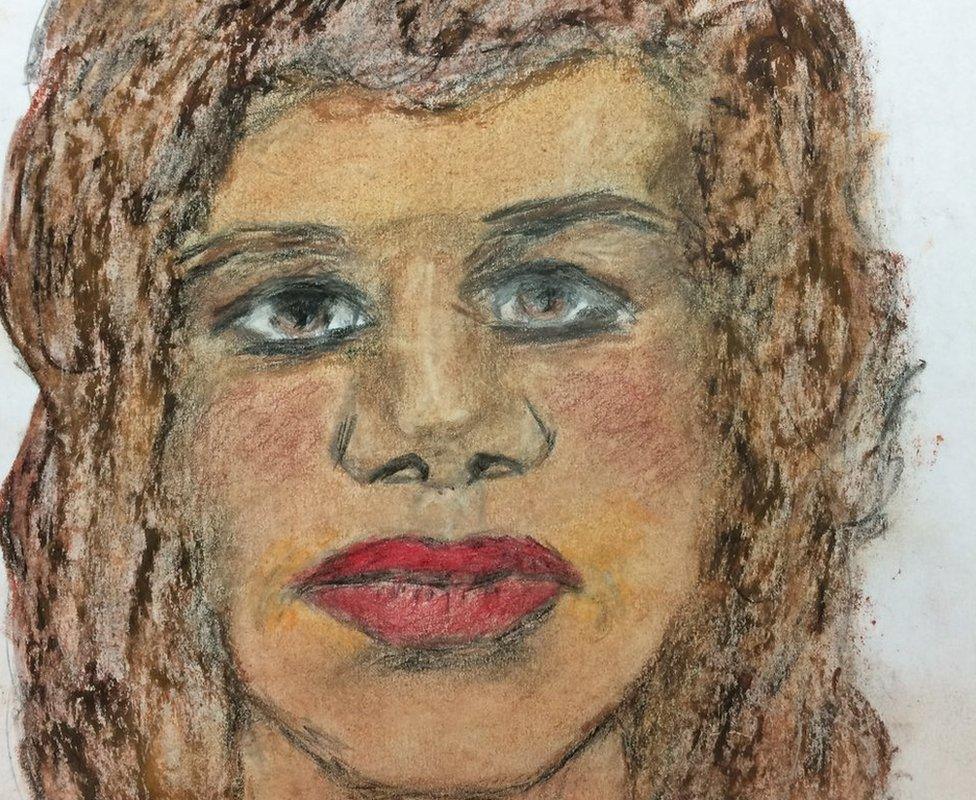
'Black female between 35-45 years old killed in 1977. Met the victim in Gulfport, Mississippi. Victim possibly from Pascagoula. Victim possibly worked at Ingalls Shipyard.'


'Black female killed in 1976 or 1977. Body disposed of somewhere outside Wichita Falls (city unspecified).'

Crime analyst Christina Palazzolo writes on the FBI website that they "found a case out of Odessa, Texas, that sounded very much like him, and we could place him passing through the area around the same time".
In spring last year, investigators set up an interview with Little, hoping to find out more information. Knowing that he wanted to move prisons, they struck a deal - he could move prisons if he talked.
Then, during the interview, Ms Palazzolo says "he went through city and state and gave [us] the number of people he killed in each place". Once he was done, he had confessed to 90 killings. The FBI says it has so far been able to verify 34 of these.
Many of Little's victims were sex workers, people with substance abuse issues and trans women, whose deaths may not have been investigated or would have been ruled to be accidental at the time.
His memory of the killings was mostly precise, as he could give details about where they happened and what car he was driving. But he was unable to remember specific dates - which, investigators say, has caused further issues with identifying the victims.
Agents are continuing to question Little and collect drawings of his victims.
Other images are described as:
Las Vegas, Nevada: 'Black female, age 40, killed in 1993'
Monroe, Louisiana: 'Black female, age 24, killed between 1987 and the early 1990s'
'Phoenix, Arizona: 'White female killed in 1997. Victim possibly called Ann'
White female, age 26, killed in 1983 or 1984. Victim possibly from Griffith, Georgia'
Atlanta, Georgia: 'Black female between 23-25 years old killed in 1984. Victim possibly a college student'
'Hispanic female in her 40s. Killed in 1988 or 1996. Victim possibly from Phoenix'
Atlanta, Georgia: 'Black female between 35-40 years old killed in 1981'
Miami, Florida: 'Black [trans female], age 18, killed in 1971 or 1972. Victim possibly called Mary Ann or Marianne'
- Published29 November 2018

- Published31 August 2018
